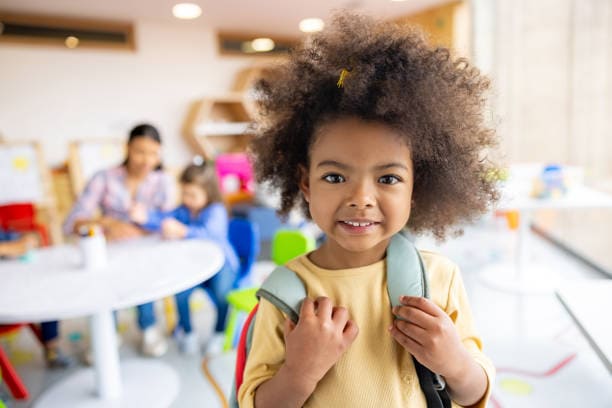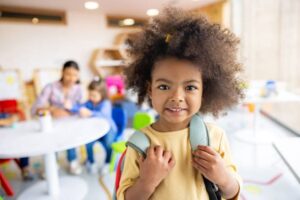10 Ways to Help Students Motivate Themselves

10 Ways to Help Students Motivate Themselves
As a student, Shatera Weaver earned a needs-based scholarship to
attend a renowned private school in upper Westchester County, N.Y., a
35-minute commute from her home. She describes the daily experience of hearing
the train conductor announce the stop that meant she was nearly home, saying,
“My body would instinctively allow my shoulders to relax and release the
clench in my jaw. That lighthearted announcement meant my heart could
literally lighten.” Her heart was heavy because “amongst all the
standards-based critical-thinking skills I learned there, I also learned that
I didn’t belong,” says Weaver, a former dean of culture at Metropolitan
Expeditionary Learning School in Forest Hills, N.Y., and the current
curriculum designer for EL Education.
Weaver says she struggled
without the solid footing that a sense of belonging provides to students.
“From 6th to 8th grade, I got into fights, broke dress code, I even
purposefully dropped my grades.” As an educator, Weaver now believes that “a
person’s purpose comes from being able to belong” and that for students to
succeed, they must first know that their identity will be recognized and
uplifted by their schools and communities.
Camille Farrington and her fellow researchers at the University of
Chicago tell us that students need to feel that they belong, that they are
valued, and that they can succeed (Nagaoka, Farrington, Ehrlich, and Heath,
2015). The Science of Learning & Development (SoLD) Alliance also affirms
what we know to be true about taking a holistic and integrated approach to
teaching and learning; students are more likely to motivate themselves to
succeed academically and socially when educators empower and enable them to
feel a sense of Belonging, Purpose, and Agency.
Belonging
Belonging
occurs when all students feel valued as part of an inclusive learning
community. They feel safe bringing their full identities to school and trust
that their peers and teachers will respect them for who they are while
encouraging them to strive to be their best selves.
“Students who
feel safe will take on more risk, and that’s where growth really tends to
happen—when students feel more vulnerable and have that support behind them in
case they need an extra crutch,” says Jose Rivera, an educator and the
restorative practices coordinator at the Brooklyn Collaborative in New
York.
Rivera knows that relationships—both student-to-teacher
relationships and student-to-student relationships—are essential in
establishing students’ sense of belonging and safety. One of the primary ways
Rivera works to cultivate and strengthen these relationships is through Crew,
a daily advisory meeting structure and school culture that allows for and
enables relationship building, academic progress monitoring, and character
development.
Dylan Paris, a rising 9th grader at Brooklyn
Collaborative, believes that one of the most impactful elements of Crew is its
longevity; Crews at Brooklyn Collaborative form in the 6th grade, and students
remain in the same Crew throughout their middle school experience. At the
start of 6th grade, Dylan says he and his Crew-mates “weren’t feeling open to
each other.” After spending three years together building belonging and trust,
he says, “we can have more in-depth conversations and get our emotions out”
during Crew. He believes Crew has given him the skills to motivate himself
toward his academic and personal goals as well as help him to encourage his
peers when he sees they are struggling.
Purpose
University
of Texas researcher David Yeager’s examination of academic motivation in
students has shown that when students have an altruistic, pro-social purpose
for their work, their academic achievement is elevated. Using “gold standard”
randomized control trials, Yeager has shown dramatic results for the academic
boost created by connecting a virtuous purpose to learning (Yeager, et al.,
2014). Students want to be good people and to have an immediate, positive
impact on the communities and the world they live in; they want their learning
to have a Purpose.
When students engage in challenging, meaningful
learning experiences—work worth doing—they develop a larger sense of purpose.
They can see how their academic work matters to their own learning and how it
can and will impact their communities. Purpose is deeply correlated to
Belonging, a connection that Shatera Weaver says her childhood teachers didn’t
take the time to ensure she could make. Had they made an effort to ensure she
felt welcomed and valued, Weaver believes she would have been able to say, “I
belong here. I have a purpose to serve here” and would have felt more
motivated to succeed during her time there.
From students in
Detroit raising awareness about the current health impact of Detroit’s housing
discrimination to humanizing the immigrant label by helping to connect
community faces to inspiring stories of immigration in New London, Conn.,
students across the country are motivated to personal and academic success
when they are given the opportunity to combine academics, character, and
service to become active contributors to a better world.
Agency
Students
experience Agency when they are empowered to take responsibility for their
growth and act as leaders with their peers. Shatera Weaver was denied this
experience as a student, which contributed to her disengagement and sense of
disenfranchisement as well as her determination as an educator to ensure that
the students she serves never experience that same lack of agency.
As
students receive the tools to understand and assess their strengths and
challenges, they are ultimately empowered to become leaders of their own
learning. They can understand and articulate learning targets, use feedback
from teachers and peers to continuously revise their work while striving
toward high-quality exemplars of student work, and develop the skills needed
to present and defend their work publicly.
When students feel
comfortable and safe bringing their full identities to school and are provided
with personal and academic autonomy as they engage in work that improves the
communities they live in, they are more likely to motivate themselves and
their peers toward personal and academic success. When students are equipped
with Belonging, Purpose, and Agency, they can and will demonstrate the passion
and capacity to contribute their unique genius to the world.
Seven
Classroom Conditions That Engage and Motivate Students
Author, teacher,
consultant, Laura Robb has taught grades 4 to 8 for more than 40 years and
continues to coach teachers in elementary and middle schools. The author of
more than 40 books on literacy, Robb writes blogs, creates podcasts with her
son, Evan Robb, and speaks at national and state conferences:.
The
goal of learning should be to nurture positive relationships between you and
students and among students which, in turn, can develop a community of engaged
learners motivated to collaborate, support one another, and find joy and
satisfaction in their work. The seven conditions that follow can support
students’ motivation and desire to learn, collaborate, self-assess, and grow
as thinkers and communicators.
1. Student-Centered Learning invites
teachers to place students at the center and give them voice and choice so
they have more control over their learning. Students, with the support of
their teacher, become decisionmakers and can negotiate what they’ll learn, how
they learn the material, establish deadline dates, complete self-evaluation of
their progress, and select authentic materials.
Whole-group,
small-group, and individual learning are part of a student-centered approach
and can include project-based learning, collaborative discussions, service
learning, and peer teaching and support. This approach empowers and motivates
students by focusing on their strengths and can result in enhanced engagement,
increased agency and meta-cognition, as students collaborate with their
teacher and peers to develop their problem-solving and critical-thinking
skills.
2. Restorative and Sustaining Practices began in Australia
in the 1990s and asked teachers to move from the punitive practices of blame
and punishment to a just approach that seeks growth and positive, lasting
change. When students break rules and act out, restorative practices invite
teachers to focus on understanding the problem and students’ feelings. When
teachers are empathetic listeners and process the student’s perspective while
attending to their explanations and body language, they can gain insights into
the student’s actions. Instead of accusing a student, be an active listener
and repeat what you heard.
For example, a student hurls verbal
insults and threatens to punch a peer. The teacher’s response using
restorative language might be: I heard you insult and threaten Joshua, and
that worried me. In this class, I want all students to feel safe and respected
by their peers and by me. Can you both take deep breaths and tell me what
happened? This nonjudgmental statement can de-escalate the conflict, encourage
both students to share their perspective and to start taking responsibility
for their actions while providing teachers time to consider a response.
Restorative practices create a safe learning environment and can build
students’ agency, responsibility, trust, empathy, motivation to learn and to
problem-solve while sustaining these positive attributes throughout the
year.
3. Differentiation asks teachers to meet the unique learning
needs of each student by being responsive and tailoring instruction to their
specific challenges, allowing all students to experience success and develop
the motivation to work hard and make academic progress. In academically and
culturally diverse classroom communities, the differentiated-teaching model
addresses students’ readiness for learning specific tasks and uses their
strengths and interests to design supportive interventions.
Differentiation
can help students experience success with learning because teachers develop
instructional moves to meet individual needs by adjusting content, tasks,
process, the learning environment, and products. As students experience
success with their learning, the risk of disengagement can decrease, and they
develop the motivation to invest in their work and take ownership of their
learning.
4. Collaboration, working as a team on specific projects
and using literature to engage in student-led conversations can result in
enhanced engagement and motivation to learn. Students invest in and engage in
their learning when teachers provide them with the skill set for
collaborative, long-term projects, how to develop their own high-order
questions to discuss literature, and self-evaluating their progress.
When
students actively participate in decisions that affect their engagement and
motivation to learn, they develop agency, independence, and responsibility to
themselves and others. In addition, collaborative learning with a partner or
small group can improve students’ oral communication, their ability to
problem-solve and actively listen, increase their confidence as learners, and
nurture leadership skills.
5. Reflection asks students to look back
and think about their reading and learning to gain insights into their process
that can help them move forward. By cultivating self-awareness, students take
responsibility for their learning and with teachers’ support explore ways they
can grow and improve as critical thinkers. When teachers model reflection,
discuss its benefits, and then reserve time for students to reflect on their
discussions, choices, decisions, and written work, students’ engagement and
motivation can increase.
6. Conferences, one-on-one, and
small-group meetings offer teachers multiple opportunities to understand
students’ progress, attitudes, motivation, and their ability to apply learning
strategies and think with the facts. Sitting side-by-side with students and
listening carefully to their comments and questions enables you to get inside
their heads and understand the level of their engagement and motivation.
Besides
scheduled conferences, conferring can and should happen when students work
independently or collaboratively during class while teachers circulate around
the room, pause at each desk to assess how things are going to support
students and answer their questions. Not only can immediate teacher support
prevent small confusions from becoming roadblocks to learning, but they also
build students’ self-confidence and engagement as they successfully complete
their work.
7. Formative assessments occur frequently, and the
information you gather by observing and interacting with students enables you
to support them as soon as challenges arise. Watch students while they read,
write in their notebooks, discuss texts with peers, collaborate on projects,
and work independently.
Read their written work to better
understand their progress. Respond to their questions and write suggestions on
a dated sticky note that acts as a reminder and resource for students. Focus
on two to four students each day class meets, and in the course of two weeks,
it’s possible to interact with everyone. There will be times when a few
students seem to struggle; observe and listen to them frequently so that you
gather data that can enlarge an understanding of their needs and the kinds of
interventions that might support them.


